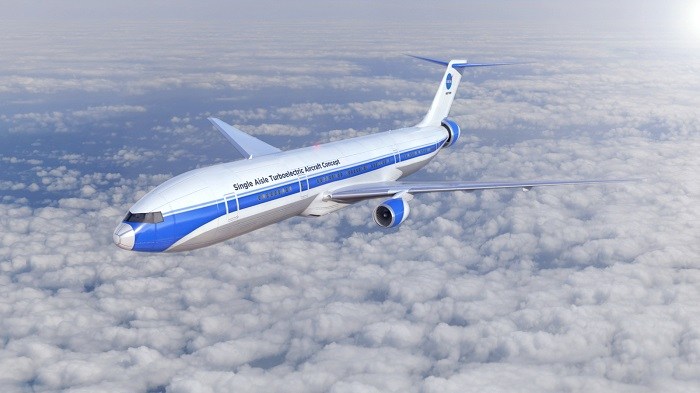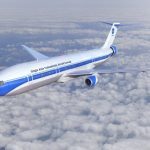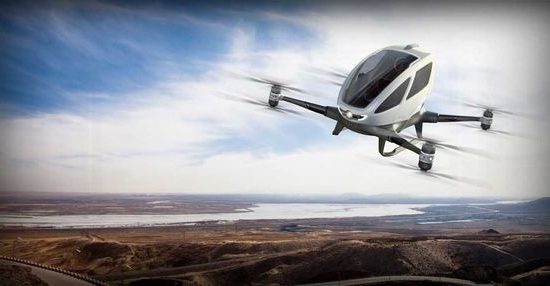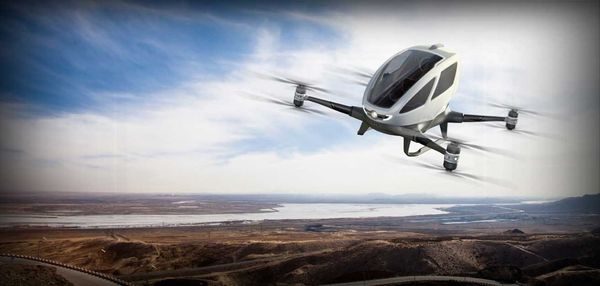
An aviation renaissance, one focused on energy efficiency and economic impact, is on the horizon, and it’s changing how engineers look at aircraft power and design.
Although the aircraft industry continues to adopt innovative technologies, which are making current aircraft more energy efficient, there’s new interest in exploring alternative propulsion systems and energy sources.
This new interest presents an opportunity to develop cutting-edge technologies that will dramatically reduce fuel usage, while opening up potential new markets and business opportunities for American companies and carriers.
“I feel we are at a tipping point in commercial aviation,” says Jim Heidmann, manager of NASA’s Advanced Air Transport Technology Project (AATT).
“We are exploring and developing game-changing technologies and concepts for aircraft and propulsion systems that can dramatically improve efficiency and reduce environmental impact and accelerate the introduction of new aircraft.”
To provide better efficiency with less noise and fewer emissions, NASA is working with the aviation industry and academia to develop unique vehicle concepts that will use different fuselage shapes; longer, skinnier and more blended wings; innovative materials and components; and highly-integrated propulsion (engine) systems.
NASA aims to accelerate the final testing and validation of these advanced concepts and technologies through its New Aviation Horizons initiative. This initiative outlines the development of a series of experimental planes (X-planes), which will achieve the agency’s aircraft-level metrics for fuel consumption, emissions and noise.
The work has already begun under New Aviation Horizons as NASA is preparing to build and fly the first such X-plane – a low-boom supersonic flight demonstrator.
A turboelectric aircraft configuration is among several candidates for future subsonic transport X-planes that will prove the benefits of these advanced technologies in piloted flight within the next decade.
*STARC Contrast: Smaller engines provide more power*
One of the most pivotal areas of commercial aviation’s transformation centers around propulsion, and a team of engineers at NASA’s Glenn Research Center in Cleveland is conducting cutting-edge research into high-pressure-ratio compact gas turbine engines, low-emission combustors, electric-enhanced propulsion and boundary-layer ingesting (BLI) engines.
“We believe global competition and international certification standards will drive reduced fuel consumption and more efficient aircraft and propulsion concepts that may use cleaner forms of energy,” said Heidmann.
“We also see the potential emergence of alternative modes of commercial transport, such as on-demand and flight service between rarely-traveled locations, both of which would represent new markets and potential beneficiaries of revolutionary propulsion technologies.”
Some of the key propulsion system advances the NASA Glenn team is pursuing converge in an aircraft concept study called STARC-ABL (single-aisle turboelectric aircraft with an aft [at the rear of the aircraft] boundary-layer propulsor).
The STARC-ABL concept, developed by NASA’s Jim Felder and Jason Welstead, is under consideration as one of NASA’s future X-planes. It looks similar to the proven tube-and-wing aircraft you see every day. But, unlike those aircraft, a significant amount of electrical power, approximately three megawatts, is used for turboelectric propulsion, in addition to the electrical operation of subsystems like flight controls, avionics and de-icing.
Imagine a Boeing 737, but with slightly smaller engines. Not a dramatic design departure, but STARC-ABL’s tail features a “T-tail” horizontal stabilizer configuration with a BLI ducted fan on the tail, which is driven purely by electric power derived from generators mounted to the underwing engines.
The wing-mounted engines supply 80 percent of the thrust required during takeoff and 55 percent at cruise, while the tail-mounted, all-electric BLI turbofan accounts for remaining thrust. Researchers predict a potential fuel consumption improvement of roughly 10 percent using this innovative system.
*Next Step: Collaboration leads to solutions*
While NASA is preparing for initial ground tests of a subscale STARC-ABL concept later this fall at NASA’s Electric Aircraft Testbed (NEAT) at Plum Brook Station in Sandusky, Ohio, several vehicle-level development challenges remain: How to balance aerodynamic efficiency, appropriately optimize the engines and aft BLI fan, validate the BLI benefits, store energy, compensate for additional weight, and meet safety and operational requirements.
To further investigate the challenges surrounding the hybridization of commercial aircraft, NASA is looking to industry and academic expertise for solutions.
NASA recently awarded 12-month contracts to Boeing, teamed with Georgia Tech, and Liberty Works, with ES Aero, to develop preliminary single-aisle, 150-seat aircraft designs using promising electric-enhanced propulsion and vehicle configuration concepts.
“During the 12-month cycle, we’ll work with the teams to take a deep dive into their hybrid and turboelectric aircraft concepts,” said Amy Jankovsky, NASA’s AATT subproject manager.
“These concepts will provide in-depth, detailed analyses of the propulsion and electrical systems, and we will recommend technology development paths for their concepts.”
The year-long study will also reveal new development approaches and any unforeseen technological hurdles, as well as any safety and flight certification challenges that could get an aircraft like STARC-ABL or other next-generation, hybrid or turboelectric aircraft concepts aloft within 20 years.
And while those proposed industry concepts could look like STARC-ABL, the real objective is to transform commercial aviation by using new propulsion technologies that meet NASA’s aircraft-level requirements of energy use, life-cycle carbon, landing-and-takeoff emissions and noise.
*Ready for Takeoff: Development, testing, flight*
Final reports from the industry study will outline hybrid-electric and conventional single-aisle aircraft concept designs, technology roadmaps for the major electrical systems and aircraft subsystems, and the evaluation of the concepts’ performance against NASA aircraft metrics.
“As we move forward, we’d like to further develop the powertrains for these and any other concepts that may prove viable by building and testing them at NEAT and other NASA facilities,” said Jankovsky. “We’ll identify key performance parameters for components such as motors, generators and power electronics, and any wind tunnel, altitude and other ground tests and flight demonstrations that are appropriate.”
Ultimately, NASA hopes to contribute to a next-generation aircraft that will substantially reduce fuel burn, noise and emissions.
Many researchers feel we are only a few steps away from a major aviation revolution, and that a commercial aircraft using NASA-developed, hybrid-electric or turboelectric propulsion technology could be flying to an airport near you in the not too distant future.






